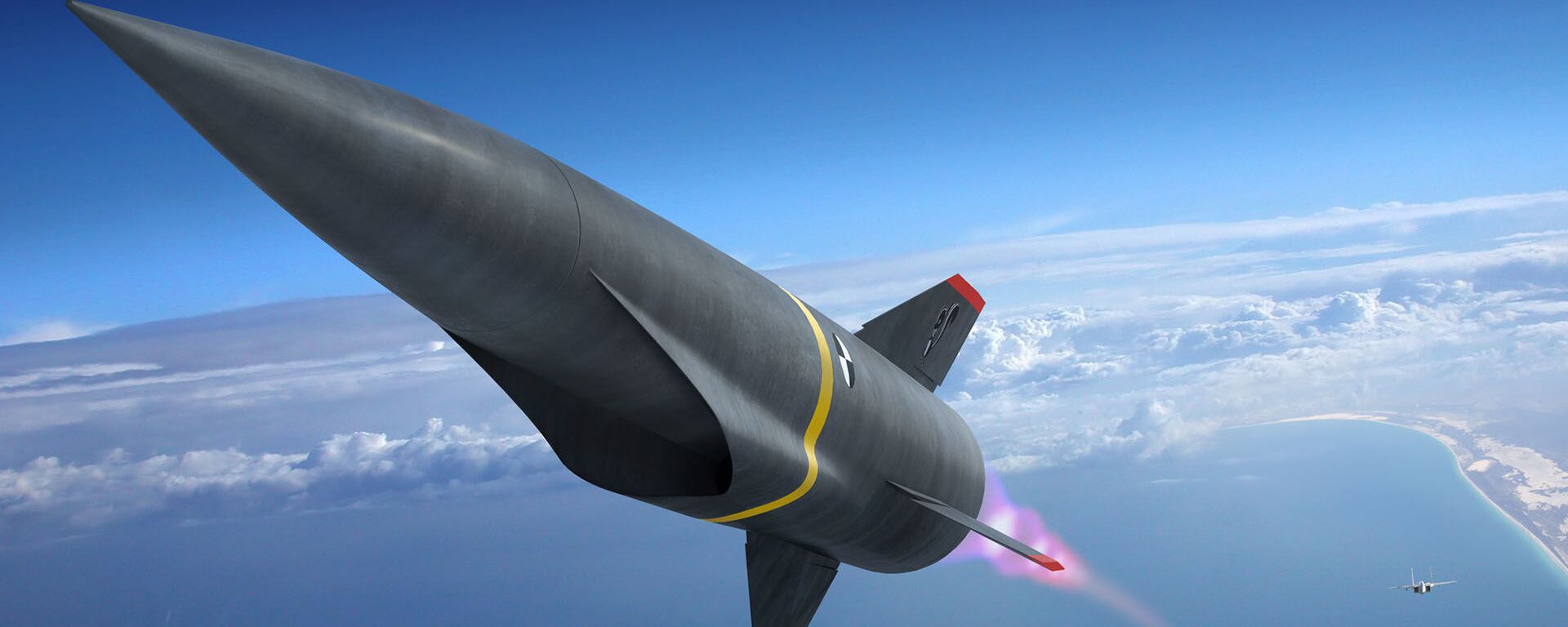https://sputnikglobe.com/20230612/what-are-japans-new-defensive-anti-ship-cruise-missile-targets-1111092642.html
What are Japan's New 'Defensive' Anti-Ship Cruise Missile Targets?
What are Japan's New 'Defensive' Anti-Ship Cruise Missile Targets?
Sputnik International
Japan has kicked off a new project under the banner of "island defense" within the framework of the nation's military reinforcement plan.
2023-06-12T17:46+0000
2023-06-12T17:46+0000
2023-09-18T13:37+0000
military
japan
tokyo
china
aukus
russia
us
missile
cruise missile
hypersonic missiles
https://cdn1.img.sputnikglobe.com/img/102473/64/1024736409_0:0:4326:2433_1920x0_80_0_0_1350e1c83327189ee49b20f3da5197ea.jpg
The Japanese Defense Ministry has unveiled a plan to create a new surface-to-ship guided cruise missile, according to the ministry's press release. Kawasaki Heavy Industries (KHI) has been assigned to implement the project over the next four years.The anti-ship cruise missile program is just one in the Japanese MoD's vast list of endeavors, including the development of hypersonic gliders, and comes as part of the nation's broad "Defense Buildup Program" announced in December 2022.It was earlier reported that Japan’s military budget of 1.42 trillion yen ($10.2 billion) would specifically include $257 million "for research on a new anti-ship missile."The new missile will reportedly have a length of between six and ten meters; boast a range of 2,000 kilometers, and be capable of achieving a subsonic speed of Mach 0.8 (980.04 km/h). To that end it would be equipped with the KJ300 turbofan engine currently under development by KHI.Judging from the Japanese MoD's press release, the weapon will have a "modular" design, allowing different configurations for various missions including land attack, electronic warfare, and reconnaissance.For its part, the US press reveals that during its cruise phase, the highly maneuverable "island defense anti-ship missile" will be guided by an inertial navigation system (INS) and global positioning system (GPS). Having entered the terminal phase, the weapon will use an infrared (IR) and/or a radio frequency (RF) seeker. Military observers pointed out that combining infrared and radar seekers will make it less vulnerable to jamming.Reportedly, the new surface-to-ship guided missile will be launched from warships, aircraft, and land-based launchers, as well as from submarines.The Drive noted that even though the contract was unveiled earlier this month, KHI has already been developing a prototype of the wonder weapon for several years. Moreover, a scale model of the KHI's "anti-ship missile" was demonstrated at the DSEI Japan 2023 exhibition this March.The media report went on to say that the new missile could be used in disputes with both China and Russia over islets in the East China Sea and Sakhalin, respectively. It noted that Japan has "a particular stake" in "protecting" the territories within the First Island Chain - which comprises the Kuril Islands, the Japanese archipelago, the Ryukyu (Nansei) Islands, Taiwan, northwestern Philippines (Luzon, Mindoro and Palawan) and ending at Borneo.US military observers believe that Tokyo is set to invest in new cruise missiles as part of its broader strategy to "deter" China, the Democratic People's Republic of Korea (DPRK), and, possibly, Russia. To that end, last December Japan passed a record defense budget for the 2023 fiscal year. In addition to the aforementioned anti-ship cruise missiles, Tokyo doubled down on the development of aircraft carriers – such as the Izumo class JS Kaga (DDH-184) – and hypersonic missiles.Furthermore, some commentators suggest that the new "island defense anti-ship missiles" would primarily target enemy hypersonic-armed ships. Given that there are no countermeasures or air defenses capable of effectively thwarting the hypersonic threat, a pre-emptive strike at hypersonic armed assets could purportedly be held, preventing them from launching their missiles. Russia, China and the DPRK have already obtained powerful hypersonic military capabilities.Meanwhile, Article 9 of Japan's pacifist Constitution prohibits offensive actions by the nation's military. Therefore Tokyo's new cruise missile project is presented as an issue of "self-defense", as per the US media. In January 2023, Western media suggested that Japan was gradually "scrapping" its post-WW2 pacifist defense strategy. The ongoing military buildup in Japan comes in parallel with the US beefing up its military presence in the Asia Pacific along with the UK and Australia within the framework of the tripartite AUKUS alliance. The US Indo-Pacific Command made it clear in April 2023 that the ongoing developments are aimed at "deterring" China, Russia and the DPRK.
https://sputnikglobe.com/20230214/japans-hypersonic-weapons-wont-make-asia-pacific-more-secure-but-the-contrary-expert-warns-1107429068.html
https://sputnikglobe.com/20230608/military-vet-new-japan-taiwan-drone-fleet-is-part-of-us-plan-to-contain-china-1111011747.html
https://sputnikglobe.com/20230511/natos-liaison-office-in-japan-part-of-plan-to-destabilize-china-and-russia-1110263884.html
japan
tokyo
china
russia
north korea
Sputnik International
feedback@sputniknews.com
+74956456601
MIA „Rosiya Segodnya“
2023
News
en_EN
Sputnik International
feedback@sputniknews.com
+74956456601
MIA „Rosiya Segodnya“
Sputnik International
feedback@sputniknews.com
+74956456601
MIA „Rosiya Segodnya“
japan military buildup, japan defense buildup program, japanese military budget, japanese pacifist constitution, japan first island chain, japan hypersonic weapons, aukus, us pacific command, asia pacific, pivot to asia
japan military buildup, japan defense buildup program, japanese military budget, japanese pacifist constitution, japan first island chain, japan hypersonic weapons, aukus, us pacific command, asia pacific, pivot to asia
What are Japan's New 'Defensive' Anti-Ship Cruise Missile Targets?
17:46 GMT 12.06.2023 (Updated: 13:37 GMT 18.09.2023) Japan has kicked off a new project under the banner of "island defense" within the framework of the nation's military reinforcement plan.
The Japanese Defense Ministry has unveiled a plan to create a new surface-to-ship guided cruise missile, according to the ministry's
press release. Kawasaki Heavy Industries (KHI) has been assigned to implement the project over the next four years.
The anti-ship cruise missile program is just one in the Japanese MoD's vast list of endeavors, including the development of
hypersonic gliders, and comes as part of the nation's broad "
Defense Buildup Program" announced in December 2022.
It was earlier reported that Japan’s military budget of 1.42 trillion yen ($10.2 billion) would specifically include $257 million "for research on a new anti-ship missile."
The new missile will reportedly have a length of between six and ten meters; boast a range of 2,000 kilometers, and be capable of achieving a subsonic speed of Mach 0.8 (980.04 km/h). To that end it would be equipped with the KJ300 turbofan engine currently under development by KHI.

14 February 2023, 16:50 GMT
Judging from the Japanese MoD's press release, the weapon will have a "modular" design, allowing different configurations for various missions including land attack, electronic warfare, and reconnaissance.
For its part, the US press reveals that during its cruise phase, the highly maneuverable "island defense anti-ship missile" will be guided by an inertial navigation system (INS) and global positioning system (GPS). Having entered the terminal phase, the weapon will use an infrared (IR) and/or a radio frequency (RF) seeker. Military observers pointed out that combining infrared and radar seekers will make it less vulnerable to jamming.
Reportedly, the new surface-to-ship guided missile will be launched from warships, aircraft, and land-based launchers, as well as from submarines.
The Drive noted that even though the contract was unveiled earlier this month, KHI has already been developing a prototype of the wonder weapon for several years. Moreover, a scale model of the KHI's "anti-ship missile" was demonstrated at the DSEI Japan 2023 exhibition this March.
The media report went on to say that the new missile could be used in disputes with both China and Russia over islets in the East China Sea and Sakhalin, respectively. It noted that Japan has "a particular stake" in "protecting" the territories within the First Island Chain - which comprises the Kuril Islands, the Japanese archipelago, the Ryukyu (Nansei) Islands, Taiwan, northwestern Philippines (Luzon, Mindoro and Palawan) and ending at Borneo.
US military observers believe that Tokyo is set to invest in new cruise missiles as part of its broader strategy to
"deter" China, the Democratic People's Republic of Korea (DPRK), and, possibly, Russia. To that end, last December Japan passed a record defense budget for the 2023 fiscal year. In addition to the aforementioned anti-ship cruise missiles, Tokyo doubled down on the development of aircraft carriers – such as the Izumo class JS Kaga (DDH-184) – and hypersonic missiles.
Furthermore, some commentators suggest that the new "island defense anti-ship missiles" would primarily target enemy hypersonic-armed ships. Given that there are no countermeasures or air defenses capable of effectively thwarting the hypersonic threat, a pre-emptive strike at hypersonic armed assets could purportedly be held, preventing them from launching their missiles. Russia, China and the DPRK have already obtained powerful hypersonic military capabilities.
Meanwhile, Article 9 of Japan's pacifist Constitution prohibits offensive actions by the nation's military. Therefore Tokyo's new cruise missile project is presented as an issue of "self-defense", as per the US media.
In January 2023, Western media suggested that Japan was gradually "scrapping" its post-WW2 pacifist defense strategy. The ongoing
military buildup in Japan comes in parallel with the US beefing up its military presence in the Asia Pacific along with the UK and Australia within the framework of the tripartite AUKUS alliance. The US Indo-Pacific Command made it clear in April 2023 that the ongoing developments are aimed at
"deterring" China, Russia and the DPRK.







